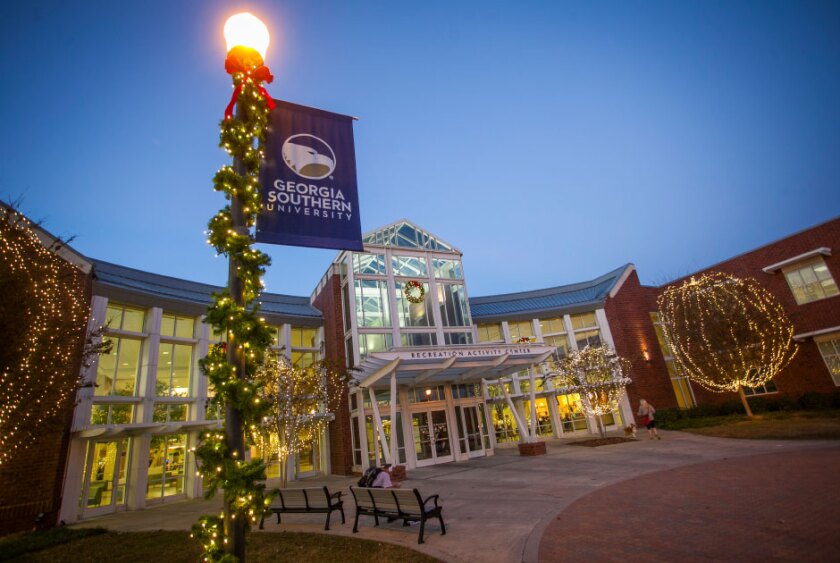Serving nontraditional and working students was in large part the rationale for last year’s acquisition of for-profit online provider Kaplan by Purdue University, which has been followed by additional consolidation and shifts throughout the higher education landscape.

In January, the 114-campus California Community Colleges system announced it would move forward with Gov. Jerry Brown’s proposal to create a 115th, online-only campus. Eloy Ortiz Oakley, chancellor of the California Community Colleges system, noted the new school is largely targeted to adult learners who are already in the workforce, but find themselves stranded in an economy that values college credentials.
“‘Some college’ is the new gateway to the workforce for this population,” says Van Ton-Quinlivan, the system’s vice chancellor of workforce and digital futures. “Given that, the question becomes, how do we meet them where they are?”
California’s new online-only public institution represents the latest disruptive change in the ongoing series of mergers, consolidations and shifts in focus that have characterized the higher education sector in recent years. Consider the torrent of announcements over the past few months:
- For-profit providers Capella Education Co. and Strayer Education formally agreed to merge in January, with the deal expected to be finalized this fall under the name Strategic Education Inc.
- Grand Canyon University has applied a second time for permission to convert from for-profit to nonprofit status. At press time, its accreditor, the Higher Learning Commission, was also expected to rule on final approval of the Purdue-Kaplan venture.
- After its attempt to purchase now-defunct ITT Tech and convert it to a nonprofit faltered, the Dream Center Foundation acquired three for-profit college chains owned by the bankrupt Education Management Corp. (EDMC). The U.S. Department of Education, which had previously scuttled the nonprofit’s attempt to acquire ITT Tech, gave its initial blessing to the $60 million sale last fall.
- In January, the merger of Georgia Southern University and Armstrong State University became the latest in a series of consolidations within the University System of Georgia that reduced the number of institutions from 35 to 26. Elsewhere, lawmakers continue to raise similar questions about public institutions and their governance structures — in recent months in Florida, New Mexico, Mississippi and Idaho.
All institutions — public, private, two- and four-year alike — feel pressure to offer different kinds of programs as expectations shift, says Trace Urdan, a managing director at Tyton Partners, an education advisory firm.
“Every institution except the super-elite is feeling this kind of pressure — to generate revenue, bring down costs, and be more responsive to working adult populations and provide opportunities that are less expensive,” he says.
While the goals of each new merger, consolidation and program have been described as highly specific to the context of the affected institutions, a few common threads are emerging. Among them:
Serving (very) nontraditional students. Traditional four-year institutions have been mourning the stagnation of the high school graduate pool for at least half a decade, while the for-profit sector and community colleges experience boom and bust cycles with each economic shift. No wonder, then, that institutions of all kinds are now targeting students who aren’t just far from their physical campuses, but unlikely to ever attend them.
“The structure of education and training is not well-suited for adults who have to work,” says Ton-Quinlivan. “It’s a population that even if our current colleges do well, no one is really thinking hard about how to reach them.”
That concept was the driving factor behind the name ultimately selected for the new institution which will come out of the Purdue-Kaplan acquisition — Purdue University Global. In announcing the new name in January, Purdue President Mitch Daniels emphasized the online university’s mission — “to bring postsecondary credentials and even degrees to people who otherwise will never have a chance to achieve them and thereby help them get a leg up on life.”

A focus on lifelong learning. As they look to put their own imprimatur on the higher education landscape, both the Trump Administration and Republican lawmakers have emphasized apprenticeship and short-term training programs, further intensifying the focus on adult learners — and providing adult skills to all learners.
“I would argue the skills gap is really a symptom of a larger problem — the gap between traditional education and workforce education,” U.S. Secretary of Labor R. Alexander Acosta said during a conference in February. “Lifelong learning and lifelong earning should not be mutually exclusive.”
That’s a driving force behind the offerings proposed for California’s online community college, which will focus on short-term credentials and certifications.
“Given how short the lifespan of skills are these days, people will need to come back [to postsecondary education] for booster shots throughout their career, and we need a flexible way to give that to them,” Ton-Quinlivan says.
Traditional four-year institutions also are increasingly partnering with employers to provide professional development and continuing education offerings, such as Purdue’s work with information technology giant Infosys and Arizona State University’s EdPlus program, which includes customized workforce education offerings for employers such as Starbucks and Adidas. There’s also growing recognition that degree programs need to incorporate the same kinds of career skills, if not credentials.
“We always told [traditional] students we’re preparing them for their second job,” says Center for Digital Education Senior Fellow Susan Metros. “There are students who graduate with BAs, MAs and PhDs who can’t get a job because they don’t code or have the entry-level skills so they can get in the door and work up to the more theoretical pieces. If you have two people and one has more technical skills, they’re going to get the job.”
New partners. While every consolidation and acquisition to date has been different, each has focused on expanding competencies. For example, the Capella-Strayer merger — called “a merger of equals” by Strayer Executive Chairman Robert Silberman — is an example of bringing together complementary strengths: graduate and undergraduate programs, online and on-campus competencies.
Beyond acquisitions, institutions that have partnered with online program management (OPM) providers to develop new programs and offerings are now seeing those partners enter new territory. 2U, for example, has focused extensively on expanding nondegree credential offerings by acquiring GetSmarter and more recently partnering with WeWork, a company that provides shared working spaces and uses them to offer coding bootcamp training programs.
New models. With the emphasis on nontraditional students and lifelong skills, it’s not surprising that institutions are focusing on competency-based learning and stackable credentials to give learners credit for past experiences. “Adults don’t want to start from scratch,” says Ton-Quinlivan. “They may have mastered some skillsets and want to move forward from that.”
As models such as prior learning assessment and competency-based education are embraced, innovative institutions will play the role of what CDE’s Metros calls an “educational competency consolidator.” For example, Charter Oak State College, a public online college in Connecticut, already allows students to earn credit for prior experience, including testing, portfolios and military service.
Given the limited success rates of students — and particularly underserved students — in online programs, new models for support also are emerging. California Community Colleges is working with the Institute for the Future and community stakeholders to explore a variety of support options for its new online college, including adaptive and machine learning to inform automated responses to common issues, as well as individualized education plans and mentoring.
California lawmakers included an R&D component in the legislation authorizing the online-only community college, with a charge to ensure new technologies, infrastructure and pedagogies are brought back to the existing 114 colleges, where one-third of the system’s 2.1 million students take at least some online courses.
The same mission? Critics have been vocal about how the blurring of lines between profit and nonprofit, as well as the exotic models that are emerging, may impact the institutional mission.
An outspoken opponent of the Purdue-Kaplan acquisition and other for-profit players, The Century Foundation Senior Fellow Robert Shireman insists that public and nonprofit institutions must maintain existing financial requirements and oversight structures.
“The case that was made around disruption ignored a lot of things,” Shireman says. “Either you eliminate conflicts of interest in the control of an institution or you don’t. When for-profit companies are deciding whether a student has been adequately counseled or is academically eligible and making progress, and whether faculty are qualified, that’s an invitation to make the wrong judgment call on all of those questions.”
It also remains incumbent on institutions to provide community — even among so-called stranded students.
“Community is very important for the educational experience,” Ton-Quinlivan says. But with the advent of social media and other new forms of communication, she adds, the concept has shifted in ways that complement online programs: “People are experiencing community in ways we would have discounted before.”
In this and other aspects, the blending and blurring of programs offer opportunities as well as challenges. The institutions that focus on supporting students in emerging programs can “establish systems much more easily in the online space, and that has the potential to allow high-quality institutions to prove themselves and leapfrog ahead of others,” Shireman says. That, he adds, “will help promote the discussion about who’s being served, who is not and what is the best way to serve them.”






